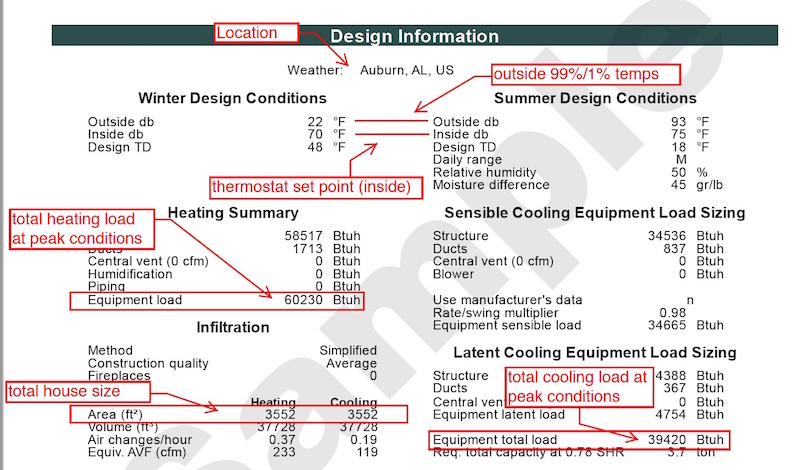When it comes to creating a comfortable and energy-efficient home, the design of the HVAC system plays a crucial role. A properly sized heating and cooling system ensures not only comfort but also long-term energy savings. One of the most critical steps in HVAC design is performing Manual J load calculations, a process that determines the precise heating and cooling needs of a home or building. Without this calculation, systems may be undersized or oversized, leading to wasted energy, higher bills, and unnecessary discomfort.
What Are Manual J Load Calculations?
Manual J is a protocol developed by the Air Conditioning Contractors of America (ACCA) to calculate the heating and cooling loads of a residential building. It takes into account factors such as:
- Square footage of the home
- Orientation and exposure to sunlight
- Insulation levels in walls, floors, and attic
- Window type, size, and placement
- Local climate conditions
- Air infiltration rates
- Number of occupants and heat-producing appliances
By analyzing these factors, professionals can determine the exact amount of heating or cooling required to keep a home at the desired comfort level year-round.
Why Are Manual J Load Calculations Essential?
1. Avoids Oversizing HVAC Systems
A common misconception is that bigger HVAC systems are better. In reality, an oversized unit cycles on and off frequently, leading to higher energy use, uneven temperatures, and unnecessary wear and tear on the equipment.
2. Prevents Undersizing
Undersized systems struggle to meet the home’s heating and cooling demands, forcing them to run continuously. This results in discomfort, higher utility bills, and a shorter lifespan of the system.
3. Improves Energy Efficiency
Accurate calculations ensure the HVAC system operates at peak efficiency. When the unit matches the home’s exact requirements, it consumes less energy while delivering optimal performance.
4. Enhances Indoor Comfort
Manual J ensures every room receives the right amount of heating or cooling, reducing hot and cold spots and maintaining consistent comfort throughout the building.
The Process of Manual J Calculations
Performing a Manual J calculation is a detailed process that involves gathering data about the property. Here’s how it typically works:
- Measuring the Structure – Dimensions of the walls, floors, ceilings, and windows are collected.
- Analyzing Insulation – The R-value of insulation in different parts of the home is assessed.
- Examining Windows and Doors – The type, size, and shading of each window and door are factored in.
- Considering Climate Data – Local weather conditions and seasonal temperature variations are included.
- Evaluating Internal Gains – Heat produced by occupants, appliances, and lighting is accounted for.
Once all data is entered into specialized software, the program generates precise heating and cooling load requirements.
Common Mistakes Without Manual J
Skipping load calculations or relying on rough estimates often leads to problems such as:
- Installing systems based only on square footage
- Ignoring window placement and insulation values
- Overlooking air leakage rates
- Failing to consider occupancy and internal heat sources
These shortcuts usually result in inefficient, uncomfortable, and costly outcomes for homeowners.
Benefits for Homeowners
For homeowners, ensuring a contractor performs Manual J load calculations before installing a new HVAC system brings several advantages:
- Lower monthly energy bills
- Improved indoor air quality
- Extended equipment lifespan
- Better return on investment
- Peace of mind knowing the system is properly designed
Final Thoughts
HVAC design is not about guesswork—it’s about precision. Manual J load calculations serve as the foundation of proper system sizing, guaranteeing that heating and cooling systems deliver maximum comfort and efficiency. By relying on this proven method, homeowners can avoid the pitfalls of oversized or undersized systems, reduce energy costs, and enjoy consistent comfort in every season.


